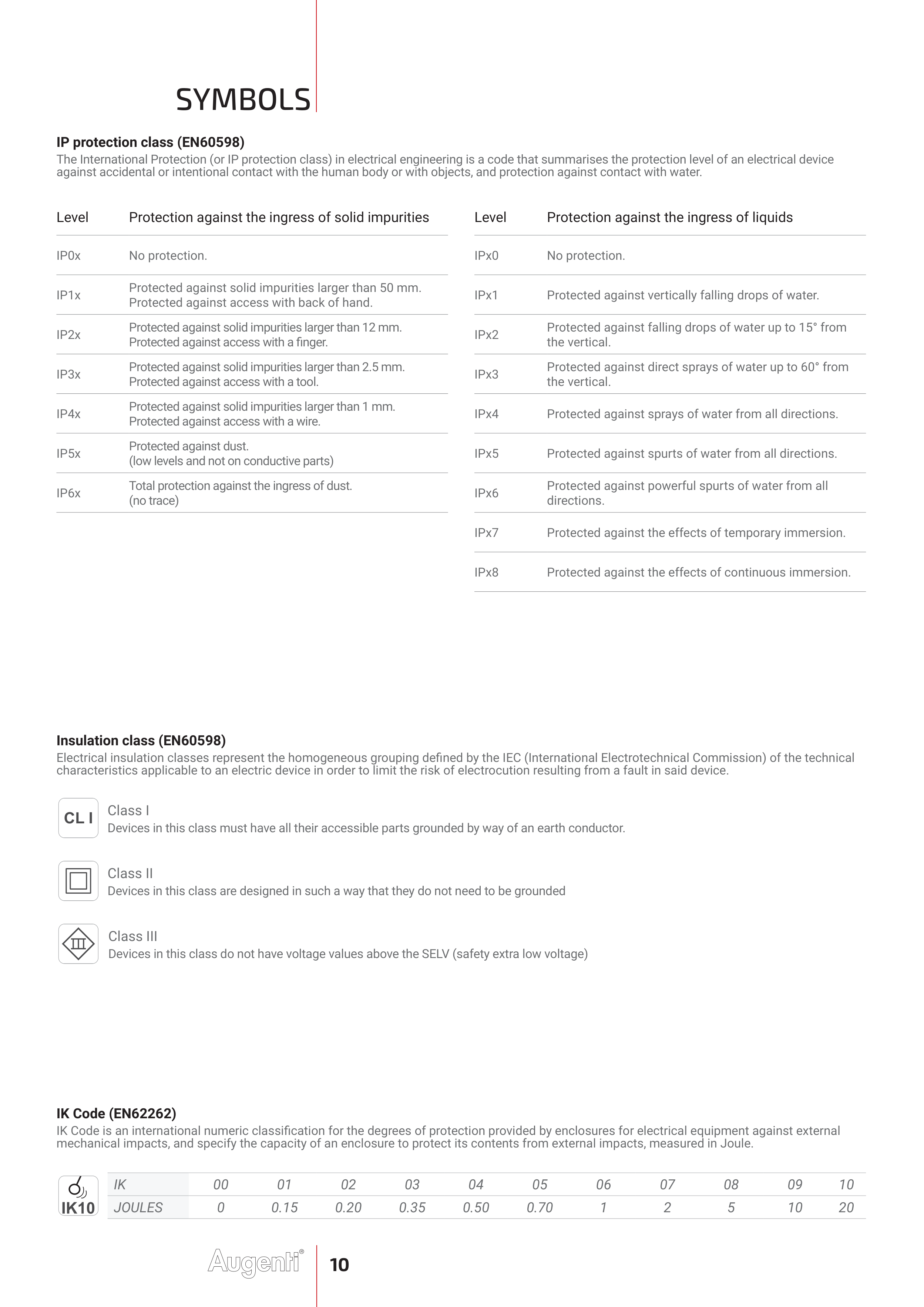SYMBOLS
Level
Protection against the ingress of solid impurities
Level
Protection against the ingress of liquids
IP0x
No protection.
IPx0
No protection.
IP1x
Protected against solid impurities larger than 50 mm.
Protected against access with back of hand.
IPx1
Protected against vertically falling drops of water.
IP2x
Protected against solid impurities larger than 12 mm.
Protected against access with a finger.
IPx2
Protected against falling drops of water up to 15° from
the vertical.
IP3x
Protected against solid impurities larger than 2.5 mm.
Protected against access with a tool.
IPx3
Protected against direct sprays of water up to 60° from
the vertical.
IP4x
Protected against solid impurities larger than 1 mm.
Protected against access with a wire.
IPx4
Protected against sprays of water from all directions.
IP5x
Protected against dust.
(low levels and not on conductive parts)
IPx5
Protected against spurts of water from all directions.
IP6x
Total protection against the ingress of dust.
(no trace)
IPx6
Protected against powerful spurts of water from all
directions.
IPx7
Protected against the effects of temporary immersion.
IPx8
Protected against the effects of continuous immersion.
IP protection class (EN60598)
The International Protection (or IP protection class) in electrical engineering is a code that summarises the protection level of an electrical device
against accidental or intentional contact with the human body or with objects, and protection against contact with water.
IK Code (EN62262)
IK Code is an international numeric classification for the degrees of protection provided by enclosures for electrical equipment against external
mechanical impacts, and specify the capacity of an enclosure to protect its contents from external impacts, measured in Joule.
IK
00
01
02
03
04
05
06
07
08
09
10
JOULES
0
0.15
0.20
0.35
0.50
0.70
1
2
5
10
20
Insulation class (EN60598)
Electrical insulation classes represent the homogeneous grouping defined by the IEC (International Electrotechnical Commission) of the technical
characteristics applicable to an electric device in order to limit the risk of electrocution resulting from a fault in said device.
Class III
Devices in this class do not have voltage values above the SELV (safety extra low voltage)
Class II
Devices in this class are designed in such a way that they do not need to be grounded
Class I
Devices in this class must have all their accessible parts grounded by way of an earth conductor.
CL I
10


